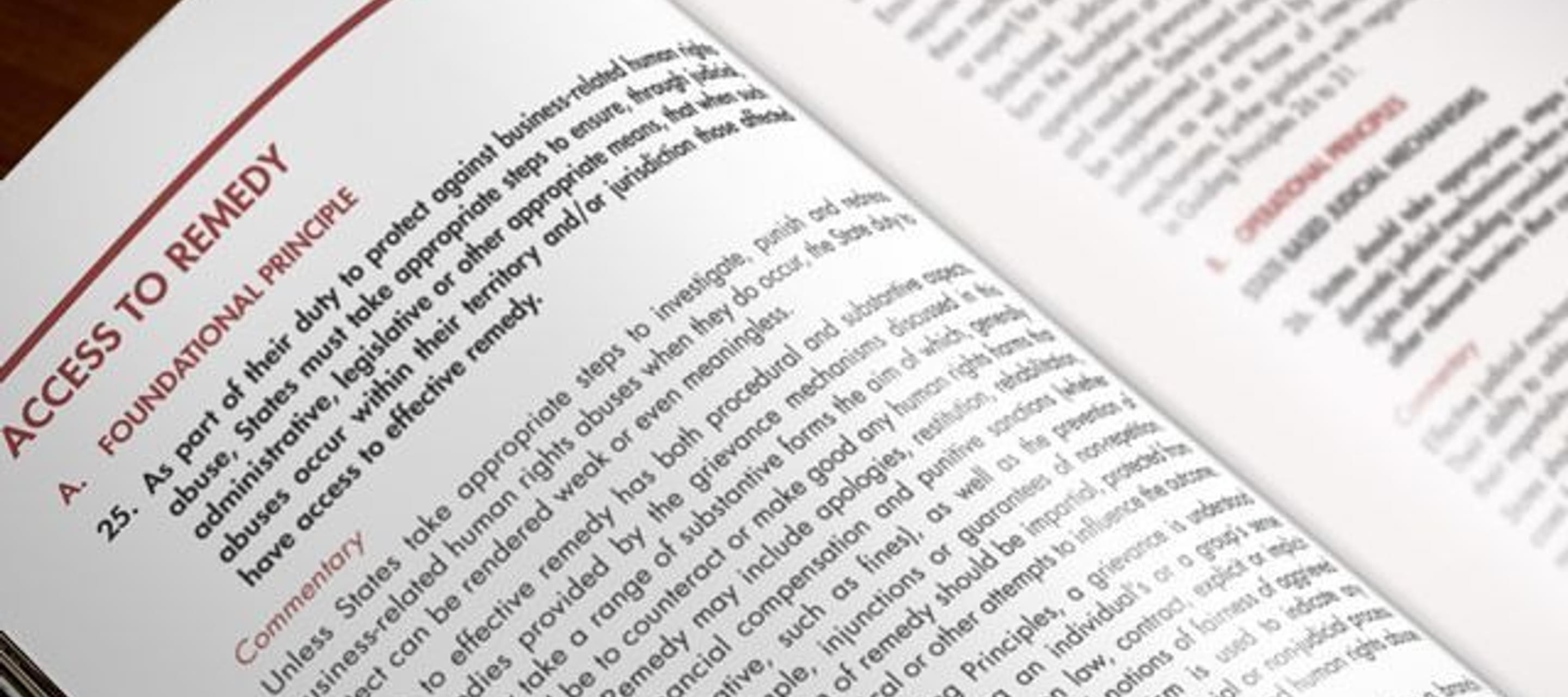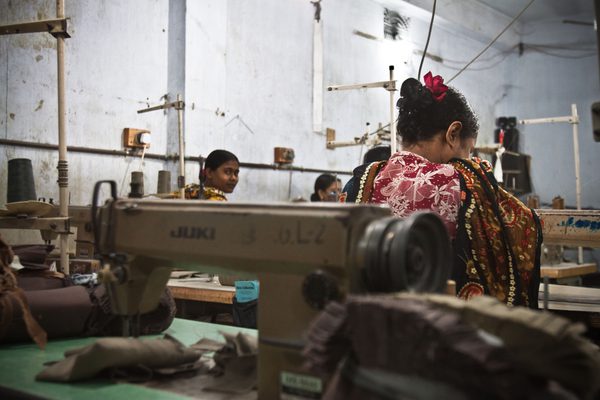Fulfilling the Forgotten Pillar: Ensuring Access to Remedy for Business and Human Rights Abuses
15 December 2015

Access to remedy featured strongly on the agenda of the Fourth Annual United Nations (UN) Forum on Business and Human Rights. This is a good sign, but also a recognition that one of the greatest challenges within the business and human rights agenda remains ensuring effective remedies for victims of business related human rights abuse.
The three-day multi-stakeholder dialogue highlighted that the Third Pillar - often termed the “Forgotten Pillar”- of the United Nations Guiding Principles on Business and Human Rights (UNGPs) is still largely overlooked. There is an urgent need for concerted effort to develop and protect robust remedies for business related human rights violations.
Falling short on remedy
As governments continue to limit and constrict judicial avenues for claims, many advocates have focused on building stronger non-judicial mechanisms. However, such mechanisms often fail to meet the needs of impacted individuals and communities. The design and implementation of both state and company based non-judicial grievance mechanisms has created limitations around enforcement, independence (or perceived independence) and transparency. A strong evidence base is emerging that maps these inadequacies. For example, research undertaken by OECD Watch into the National Contact Point (NCP) system highlights the poor performance of the system in handling and addressing human rights complaints. The report, Remedy Remains Rare, found that a range of practical and procedural barriers exist within the NCP system including a lack of accessibility, impartiality, conformity with procedural timelines and transparency. The research also found that many outcomes are incompatible with the OECD Guidelines for Multinational Enterprises. As a result, after 15 years of operation the NCP system has failed to provide an avenue of effective remedy for victims of corporate human rights abuses.
Company based mechanisms are also falling short in providing effective remedy for adverse human rights impacts and violations. For example, a three-year research project conducted by the Human Rights Clinics at Harvard University and Columbia University found serious flaws in the grievance mechanism established by the mining company Barrick Gold in Papua New Guinea. This research highlights a number of weaknesses in the remediation mechanism including: poor community consultation; lack of centrality of rights-holders; delays in investigation and response; and a failure to address the power imbalances at play. Ultimately, the research found that Barrick’s grievance mechanism failed to meet international human rights standards.
Accumulating evidence highlights the need for frank and critical conversations about what’s working when it comes to remedy, what’s not, and why. The critical aspect will be how to apply lessons learnt around challenges, opportunities and limitations of different forms of remedy. As this evidence base builds, there will come a time when States and companies can no longer justify poor implementation, inaction or indifference.
Many would say that time is now.
Certainly legal and procedural barriers make judicial remedies difficult to implement including the cost of litigation, time limitations on bringing claims, as well as issues impacting on standing and extraterritoriality jurisdiction. States must therefore explore opportunities to strengthen and develop legislation and policies to overcome these well-recognized barriers.
National Action Plan (NAP) processes on business and human rights provide a vehicle to do just this. However, we have seen a worrying trend where remedies are forgotten once again as existing NAPs barely address the issue. An appraisal conducted by the International Corporate Accountability Roundtable (ICAR) and the European Coalition for Corporate Justice (ECCJ) found that the majority of published NAPs do not ensure adequate human rights protections and commonly provide little or no measure to ensure access to judicial remedy. If NAPs are to be a genuine commitment of States’ implementation of the UNGPs, the remedy component – the Forgotten Pillar – must be fulfilled.
Stronger leadership needed
Effective access to remedy requires focused attention and leadership from all stakeholder groups. For companies, access to remedy must be given greater consideration, not only through their own internal grievance mechanisms but also in exercising leverage within their relationships across industry and with governments to strengthen judicial mechanisms. The best environment for business is one that is grounded in a strong rule of law.
As civil society we must continue to push the boundaries of the status quo and develop workable solutions to overcome the magnitude of barriers to effective forms of remedy. One of the biggest barriers is limited liability of parent companies for the actions of their subsidiaries. ICAR’s Parent Company Accountability Project Report and project offer specific recommendations and ways forward to address the limited liability of a parent corporation for victims adversely impacted by a subsidiary’s actions.
Civil society organizations in Europe are also pushing the corporate accountability frontiers. Sherpa, Amnesty International and other organizations in France have long advocated for enhanced frameworks to hold parent companies accountable through imposing a duty of care. Regrettably, the French Senate rejected a bill in November 2015 on this subject. It will now move to the agenda of the French National Assembly for a second reading. In Switzerland, a civil society coalition known as the Responsible Business Initiative, is pushing for increased liability of parent companies for the human rights impacts and violations of their subsidiaries. These initiatives represent an important stand against prevailing corporate impunity for human rights abuses.
Lastly, real improvements on the ground cannot occur without strong leadership from States at the local, regional and global level. The work of the UN Office of the High Commissioner for Human Rights (OHCHR) and its Accountability and Remedy Project is encouraging, and needs to build and extend past the current mandate to ensure that materials developed are ultimately implemented by States.
The largest threat to the UNGPs is whether remedies will remain forgotten. If States fail to ensure strong judicial mechanisms are protected or extended, and if companies fail to bring their own processes in line with international human rights standards, the risk of policy divergence increases exponentially. There are no rights without remedies – and States need to lead in ensuring that remedies are no longer illusory, but real.



